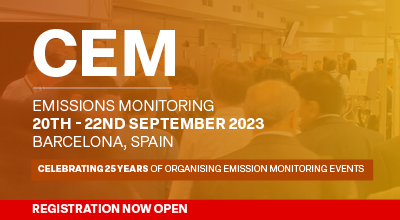| Abstract Title: | Consideration of Prospective Economic Enhancements for HgCEMS QA/QC under EU BREF |
| Presenter Name: | Mr Karl Wilber |
| Company/Organisation: | Tekran Instruments Corporation |
| Country: | United States |
Abstract Information :
Abstract: This presentation will provide incremental strategies for the selection and operation of HgCEM Systems in the EU under EU BREF. It will include “lessons learned” from other geographic and regulatory regions as well as recommendations for tools and strategies intended to improve the quality and reliability of mercury emissions measurements. Input from utility experiences in both the EU, US and Pacific Rim countries will be included. Situation Analysis The European Union has published and ratified Best Available Techniques (BAT) Reference documents (BREFs) for Large Combustion Plants (LCP). In general, these regulations call for reductions in pollutant emissions from these plants and ongoing emissions monitoring of key parameters such as SO2, NOx, CO, CO2, particulate, and mercury. Mercury emissions from LCPs represent nearly 40 percent of the total anthropogenic mercury emissions in the EU, and thus their reduction and monitoring are important. The governing EU BREF documents also provide for continuous improvement of plant processes which will lead to further reduction of pollutants from LCPs. EN 14181:2014 defines a quality assurance and control (QA/QC) system for continuous emissions monitoring systems (CEMS), described as automated measuring systems (AMS) in the standard which defines three Quality Assurance Levels (QAL1 (certification), QAL2 (calibration) and QAL3 (control)) and an Annual Surveillance Test (AST). This standard is applicable to AMS installed at emission sources for the determination of the flue-gas components and other flue-gas parameters. In EN 15267 Parts 1 to 3, the QAL1 type approval process is defined, including the procedures for achieving the required certifications, and these are applied before the AMS is installed at the emission source. Once the QAL1 type approved AMS is installed, and QAL2 calibrated by an accredited test laboratory, the AMS need to be subject to a ‘regular’ zero and span check under QAL3, although any additional day-to-day quality assurance and control is subject to interpretation and may well be site-specific in nature. When developing emissions regulations, particularly for a wide range of plant configurations, operating conditions, fuel sources and air pollution control devices, it is always a challenge to craft “one-size-meets all” guidelines. Monitoring of Hg emissions from LCPs >300MWth, must be made continuously with an AMS which has undergone TÜV Certification. Because the BAT Associated Emission Levels (BAT-AEL), defined in the BREFs for new plant, are on the order of 1 µgHg/Nm3, the range of focus in the TUV Certification process needs to reflect this low level of performance. The latter also puts additional pressure on the QA/QC of the AMS when deployed on an LCP. This paper will discuss some of the inferred as well as suggested areas for potential incorporation into regular monitoring and maintenance of Hg CEMS systems for LCP, under EU BREF. Bulleted below are highlights of some of the areas to be discussed, analyzed and presented with reference to EN 14884 (under revision). 1. How did the AMS perform at low levels (e.g. 0-5 µg Hg/Nm3) in the TUV QAL1 Certification Tests? 2. What type of remote connectivity and monitoring might be valuable for use in real-time monitoring of the Hg emissions levels and the AMS, in general? 3. Would an on-board calibrator and/or separate source of Hg gas, either oxidized, elemental or both, be valuable in assessing ongoing performance of the AMS used for Hg emissions? 4. Does the concept of a “Low Emitting Electric Generating Unit” (US EPA “LEE” status) warrant traction in the EU? In this case, if, for instance, a LCP consistently evidences Hg emissions less than, say, 0.25 µgHg/Nm3, can the operator revert to periodic grab sampling of flue-gas Hg, to EN 13211 for example, in place of continuous monitoring?

